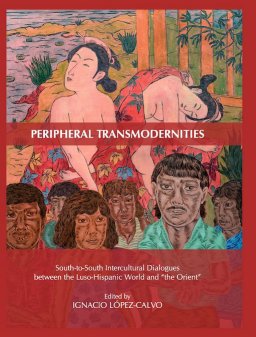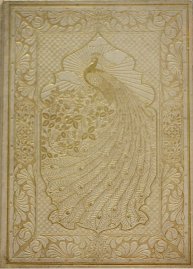 In “Otras inquisiciones, 1937-1952” (1952) the famous Argentinian author Jorge Luis Borges published a short essay “El enigma de Edward FitzGerald”, in which he suggests that Omar might be reincarnated in Edward FitzGerald. In his earlier work “Inquisiciones” (1925) Borges also wrote a short essay called “Omar Jaiyám y FitzGerald” in which he refered to a translation to Spanish of a number of quatrains of Omar Khayyám by his father, Jorge Guillermo Borges (1874-1934). This reference to his father was left out in the later Inquisiciones of 1952.
In “Otras inquisiciones, 1937-1952” (1952) the famous Argentinian author Jorge Luis Borges published a short essay “El enigma de Edward FitzGerald”, in which he suggests that Omar might be reincarnated in Edward FitzGerald. In his earlier work “Inquisiciones” (1925) Borges also wrote a short essay called “Omar Jaiyám y FitzGerald” in which he refered to a translation to Spanish of a number of quatrains of Omar Khayyám by his father, Jorge Guillermo Borges (1874-1934). This reference to his father was left out in the later Inquisiciones of 1952.
Borges Jr.’s later essay may be familiar to the Omar devotees, but that his father was one of the first to translate Khayyám’s quatrains to Spanish is probably new to many of us. We learn more about early Spanish translations in a chapter “Omar Khayyam’s Epicureanism” by Axel Gasquet (Université de Blaise Pascal, Clermont-Ferrand), with the subtitle “The Spanish translations of Rubaiyats”. The author gives a brief summary of a number of translations published in Spanish-American countries. Here, and in the Phillipines twelve translations of the Rubáiyát were issued in twenty-six years. The first translation was by Juan Dublan (Mexico, 1904), followed by Gregorio Martinez Sierra (Madrid, 1907), and finally by Francisco Propata (Paris, 1930).
Four works are discussed more in detail: the versions by Dublan, Muzzio Sáenz-Peña, González and Bernabé. Gasquet describes the socio-cultural conditions of their time, and the sources of their work. He also shows how the hedonist-mystic debate played a role in these works.
Though the analysis is limited to only four translations, the chapter is rather interesting as it informs us about a number of translations that are not all in Potter, and that are probably unknown to many of our readers. One reason might be that these unknown translations were published in magazines or journals, or were part of anthologies.
The twelve translations that are refered to are:
- DUBLAN, Juan. “Ruba’iyyat” de Omar Khayyam. Mexico, Caranza, 1904. (online at archive.org) (Potter 509)
- SIERRA, Gregorio Martinez. Los Rubayata de Omar Khayyam de Naishapur. In: ‘Renacimiento’, March 1907, pp. 89-104 (Potter 510)
- MUZZIO SÁENZ-PEÑA, Carlos. Rubaiyat de Omar-al-Khayyam. La Plata, Sesé, 1914.
- CASTELLOT, José. Rubaiyat de Omar Khayyam. Prologo por Jose Juan Tablada. New York, [s.n.], 1918. (Potter 584)
- BORGES, Jorge Guillermo. (Sixty-two quatrains). In: ‘Proa’, 1924. (A smaller number of quatrains was published in ‘Gran Guignol’, 1920.
- EULATE SANJURJO, Carmela. Rubayyat. In: ‘Antología de poetas orientales’. Barcelona : Editorial Cervantes, 1921.
- GUIRAO, Pedro. Omar Khayyam. Las mejores poesías (líricas) de los mejores poetas. XXXI. Barcelona, Cervantes, 1922 (Potter 517)
- BERNABÉ, Manuel. Rubáiyát de Omar Khayyam. Manilla, Imp. de la Vanguardua, 1923.
- GARCIA CALDÉRON, Ventura. Omar Kheyyam. Rubaiyat. San José de Costa Rica, El Convivio, 1925.
- GONZÁLEZ, Joaquín V. Rubáiyát de Omar Khayyám. Buenos Aires, Roldán, 1926. (Potter 518)
- PROPATO, Francisco. Ensayo crítico sobre Las Rubáiyát de Umar-i-Khayyám. Acompañado de la versión castellana y de notas. Paris, Bourdon, 1930.
Peripheral Transmodernities : South-to-South Intercultural Dialogues between the Luso-Hispanic World and “the Orient.” Ed. by Ignacio Lopez-Calvo. Newcastle upon Tyne, Cambridge Scholars Publishing, c2012. ISBN 9781443837262.
Read about about this book on: http://ignaciolopezcalvo.blogspot.nl/2012/02/peripheral-transmodernities-south-to.html
A number of Borges’s rubaiyat can be found at: http://cronicasdeotros.blogspot.nl/2010/03/del-poema-de-omar-jaiyiam-omar-khayyam.html

 Len Green, from Australia, has just issued another book with selections from various translations of Khayyám’s verses, dedicated almost entirely to Omar’s wine quatrains and everything one needs to enjoy a good bottle: the vine, the grape, the juice, the draught, Saki, cup and cupbearers, bowls and bottles, jugs and jars, flasks and flagons, the rose and the tulip and of course your loved one.
Len Green, from Australia, has just issued another book with selections from various translations of Khayyám’s verses, dedicated almost entirely to Omar’s wine quatrains and everything one needs to enjoy a good bottle: the vine, the grape, the juice, the draught, Saki, cup and cupbearers, bowls and bottles, jugs and jars, flasks and flagons, the rose and the tulip and of course your loved one.